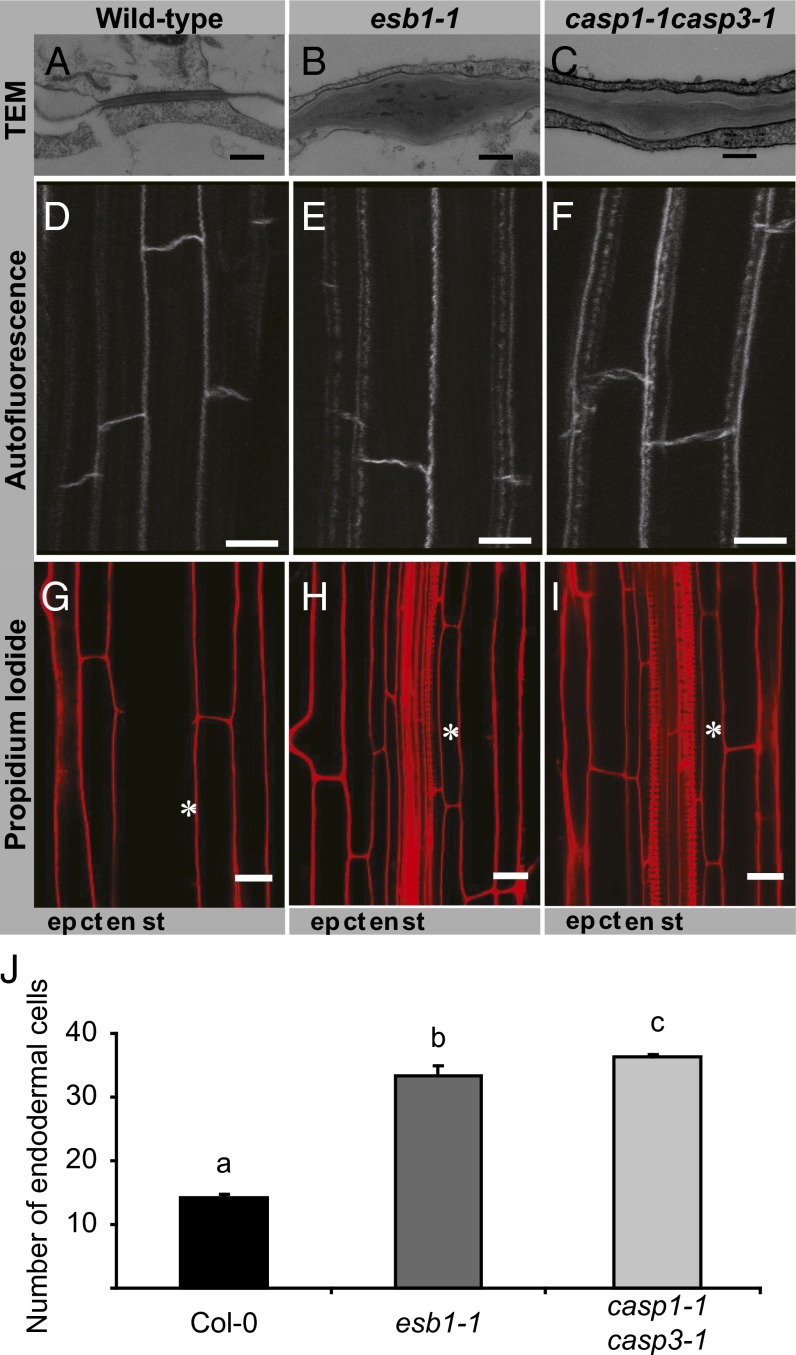Fig. 3.
The dirigent-domain protein ESB1 is required for the normal morphology and function of the lignin Casparian strip. Transmission electron micrographs showing Casparian strip in wild-type (A), esb1-1 (B), and casp1-1casp3-1 (C). Autofluorescence visualization after clearing root in wild-type (D), esb1-1 (E), and casp1-1casp3-1 (F). PI penetration in wild-type (G), esb1-1 (H), and casp1-1casp3-1 (I). Asterisks mark the 30th endodermal cell after onset of elongation. Onset of elongation is defined as the zone where the length of an endodermal cell was observed to be more than twice its width. (J) Quantification of PI penetration into the stele quantified as number of endodermal cells from the first fully expanded cell in wild-type, esb1-1, and casp1-1casp3-1. Casparian strips in wild-type plants form a barrier to apoplastic diffusion of PI starting at the 13th endodermal cell from the onset of elongation, whereas in esb1-1, this barrier does not form until the 32nd endodermal cell. Different letters (a, b, and c) indicate statistically significant differences between means by one-way analysis of variance (ANOVA) with Tukey–Kramer separation of means (P < 0.05), n = 15 roots. (Scale bars: A–C, 250 nm; D–F, 10 µm; G–I, 20 µm.) ct, cortex; en, endodermis; ep, epidermis; st, stele.

